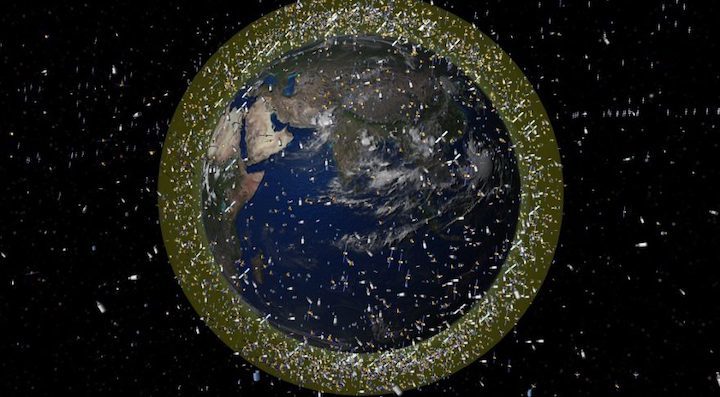8.10.2020

WASHINGTON — A startup is using an initial round of funding to build up tools it believes will provide more accurate notifications of potential collisions for satellite operators.
Kayhan Space, based in Boulder, Colorado, announced Oct. 6 it closed a $600,000 “pre-seed” round, led by an Atlanta-based venture capital firm, Overline. Other participants in the round included Techstars and Dylan Taylor.
The 10-person startup will use the funds to continue development what is calls the Kayhan Satellite Collision Assessment and Avoidance System, which takes in space situational awareness data and provides satellite operators with improved and more actionable notices of potential conjunctions with other satellites or debris.
Satellite operators currently can get notifications of close approaches from the U.S. Space Force’s 18th Space Control Squadron in the form of “conjunction data messages” or CDMs, but it’s up to operators to evaluate whether and how to act on each one.
“You can sign up for CDMs, but that doesn’t come with a recommendation,” said Siamak Hesar, chief executive and co-founder of Kayhan Space, in an Oct. 6 interview. “That is left up to you.”
Larger satellite operators may have in-house experts, or work with other firms, to analyze those CDMs and decide whether a maneuver is needed. Others, though, may leave it to chance. “That’s scary, because it puts everybody at risk,” he said.
Kayhan Space’s system offers what he says is a “fully autonomous” approach to analyzing data from the Defense Department and deciding on whether a maneuver is needed. Operators can step in and override a decision on a maneuver, “but the goal to make it a fully autonomous process.”
“The company’s platform helps mission operators separate signal from noise and avoid the time and money lost on unnecessary maneuvers,” said Sean O’Brien, managing partner of Overline, in a statement. “We see Kayhan Space’s solution playing a big part in the future growth of the space economy.”
While the system uses Defense Department data, it can incorporate other data sources, such as the operator’s own data on the position of its satellites, which can be more accurate than data from the DOD. It can also incorporate data from the growing number of commercial providers of space situational awareness data.
Hesar said the company is also looking forward to the establishment of an “open architecture data repository” for space situational awareness data by the Commerce Department, which was assigned responsibility for civilian space traffic management by Space Policy Directive 3 in 2018. “That’s a very positive development for us,” he said, citing the ability to access additional data and collaborate with other companies.
Kayhan Space has signed up two customers, the identities of which it said it could not currently disclose. Those two customers combined operate nearly 20 satellites, said Araz Feyzi, co-founder and chief technology officer. The company is in talks with what he described as “one of the largest satellite operators” that he hopes to be able to announce in the near future.
Kayhan Space recently completed the Techstars Allied Space Accelerator, which was established last year by the U.S. Air Force in cooperation with government agencies in The Netherlands and Norway. The pandemic turned that accelerator into an entirely virtual experience, but Hesar said it was still a “fantastic opportunity” for the company.
“We had two goals to achieve for the program. One is to get customers, and the other is to raise funds,” he said. “We were able to achieve both, so that was successful.”
Kayhan Space plans to expand the services it offers over time beyond conjunction assessments to other phases of satellite operations, from mission design to telemetry and commanding. “Conjunction assessment is our beachhead product,” Feyzi said. “We plan a robust set of functions helping with day-to-day operations of satellites.”
“This issue is not one we can solve with technology alone,” he added, noting that the company’s conjunction assessment services have to be combined with policy work in space traffic management. “We’re doing our part by building technologies that can help make spaceflight safer.”
Quelle: SN
